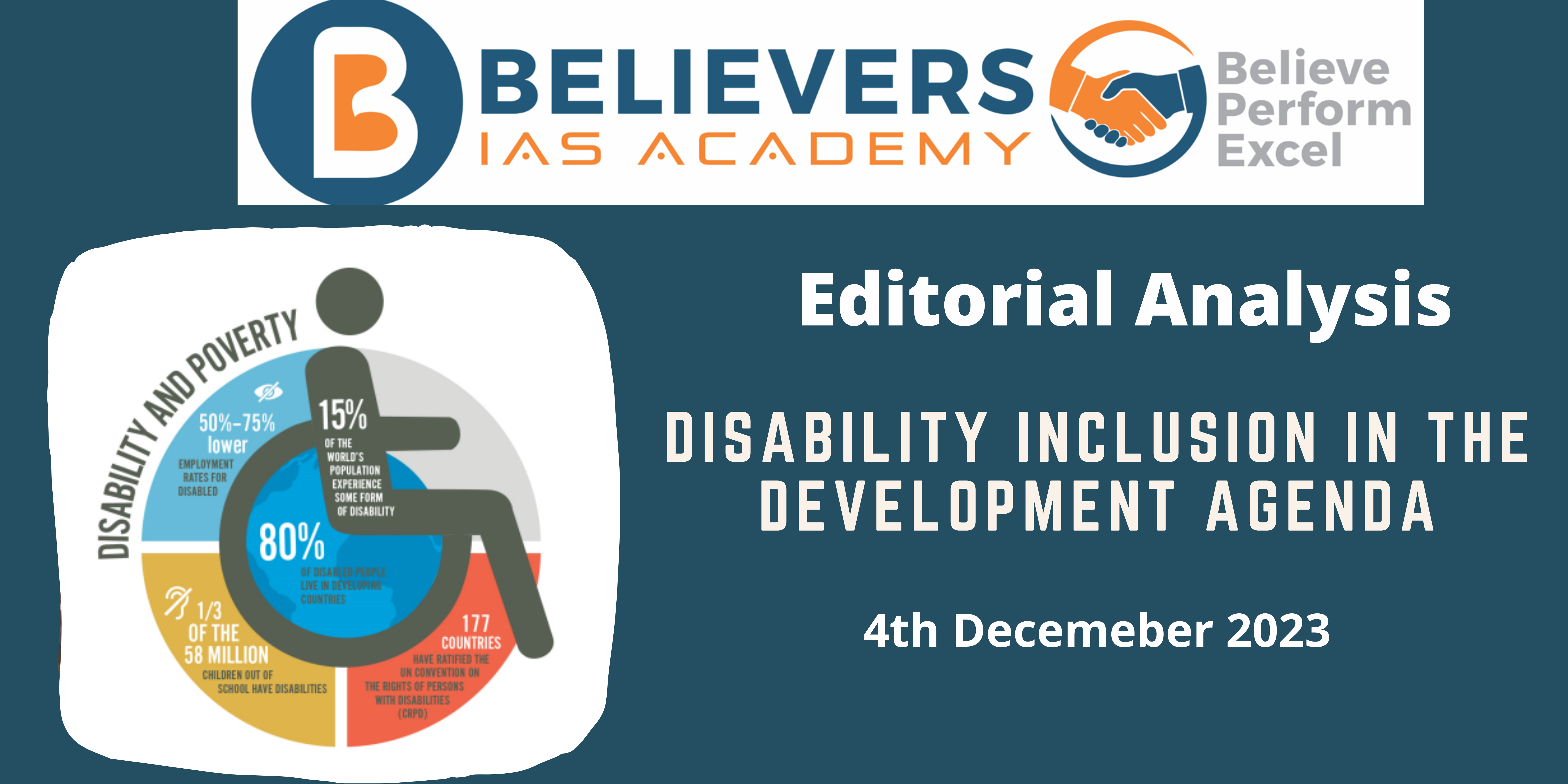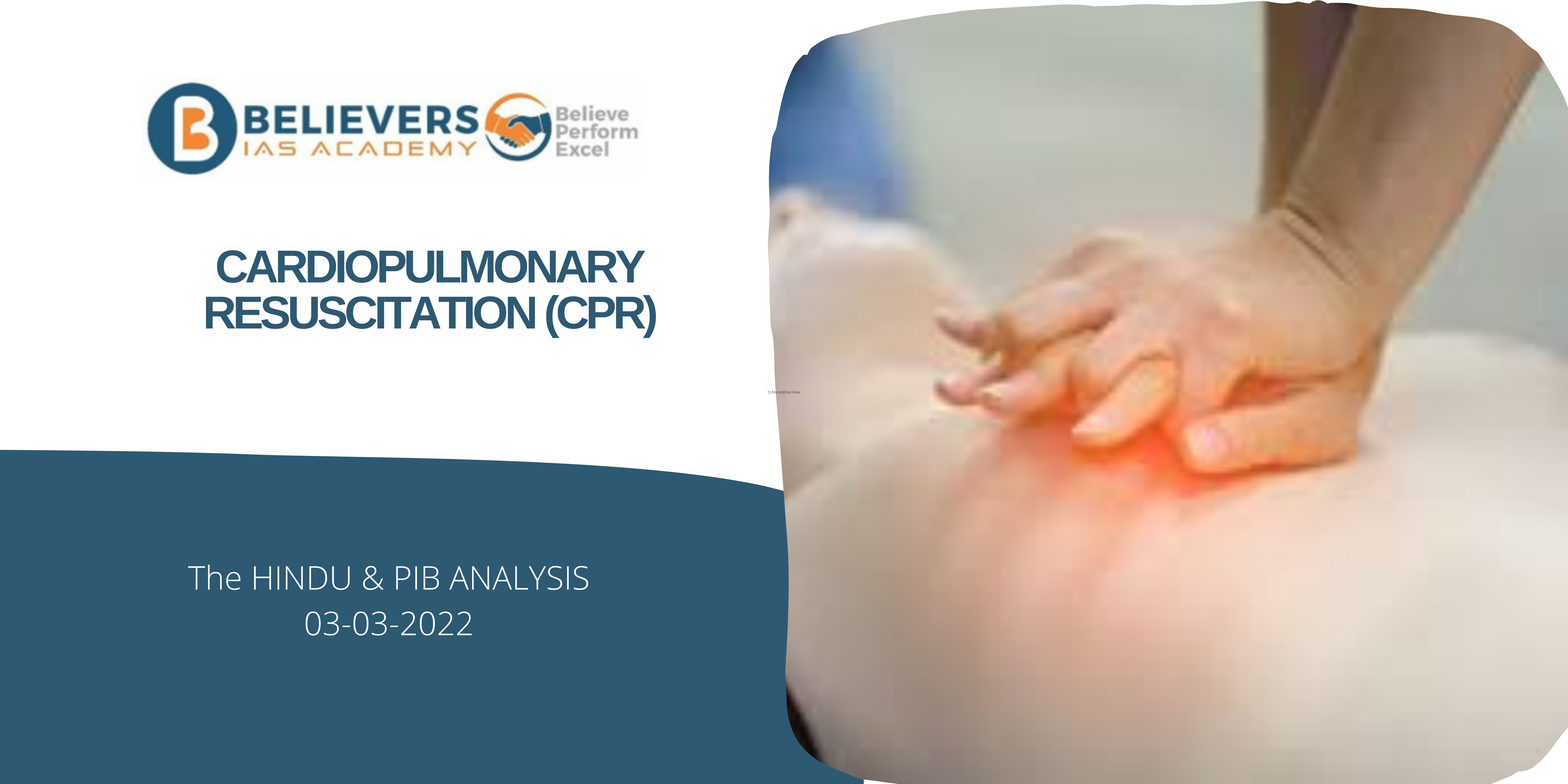Disability Inclusion in the Development Agenda
Context:
Disability, existing at the crossroads of social, economic, and gender vulnerabilities, affects a staggering 1.3 billion people globally. Despite constituting 80% of this population, residing predominantly in developing countries, a lack of tailored systems results in increased poverty, limited access to education and opportunities, and social and economic discrimination.
Relevance:
GS-03 (Inclusive Growth)
UPSC Mains Question:
Discuss the intersectionality of disability with social, economic, and gender vulnerabilities, emphasizing the importance of an inclusive approach for effective development. (150 words)
Dimensions of the Article:
- Global Landscape
- Challenges in Rural Areas
- Private Sector Role
- What is Inclusive Growth
- Key Components of Inclusive Growth
- Measuring Inclusive Growth
- Inclusive Opportunities and Employment in Rural Areas
- The SPARK Project
Global Landscape:
- With 1.3 billion people grappling with disabilities globally, of which 70% reside in rural areas of developing nations, the scale of the challenge is vast.
- The prevalent exclusionary systems perpetuate poverty, lack of education, and economic discrimination for persons with disabilities.
- A paradigm shift toward disability inclusion could potentially boost global GDP by 3% to 7%, as indicated by the International Labour Organization. However, the existing employment scenario falls short, perpetuating stereotypes and hindering access to the labor market for persons with disabilities.
Challenges in Rural Areas:
- Rural India faces additional hurdles, with limited access to education and employment, and schemes often excluding persons with disabilities.
- A bottom-up approach, involving community leaders in awareness campaigns, is crucial to overcoming these challenges.
Private Sector Role:
- The private sector plays a pivotal role in enhancing employment opportunities for persons with disabilities.
- Engaging employers’ federations and trade unions is vital, showcasing the importance of both a robust legal framework and private sector involvement.
What is Inclusive Growth:
- Inclusive growth signifies economic development that generates job opportunities, reduces poverty, and ensures access to essential health and education services for all.
- It is rooted in providing equal opportunities, empowering individuals through education and skill development, and fostering a society that is environmentally sustainable and gender-sensitive.
- As per the OECD, it entails fair distribution of economic growth across society, creating opportunities for everyone.
Key Components of Inclusive Growth:
- Skill Development: The demographic dividend’s success hinges on the employability of the working-age population, emphasizing health, education, vocational training, and skills. India faces challenges with both a shortage of highly trained workers and non-employment of conventionally trained youths.
- Financial Inclusion: Ensuring access to financial services for vulnerable groups at affordable costs is crucial for fostering a culture of saving, initiating economic development cycles.
- Technological Advancement: In the era of Industrial Revolution 4.0, technological advancements can either decrease or increase inequality. Initiatives like Digital India Mission aim to create a digitally literate population, leveraging technology for various sectors, including agriculture, manufacturing, education, health, and governance.
- Economic Growth: India, among the fastest-growing economies globally, faces a current slowdown due to cyclic and structural challenges. Achieving the target of a $5 trillion economy by 2024-25 can potentially reduce inequality, increase social expenditure, and provide employment opportunities.
- Social Development: Empowering marginalized sections, including SC/ST/OBC/Minorities, women, and transgenders, through improved institutions like healthcare and education, is vital. Investments in social structures contribute to growth, create a healthy workforce, and address future challenges.
Measuring Inclusive Growth:
- Inclusive Development Index (IDI): Based on the World Economic Forum’s IDI, India ranks 62nd among emerging countries, emphasizing growth, inclusion, and intergenerational equity.
- Social Progress Index (SPI): SPI aggregates social and environmental indicators, offering a comprehensive measure that includes basic human needs, well-being foundations, opportunities, and more.
- Global Slavery Index: Addresses modern slavery concerns and evaluates government actions to combat it, with India focusing on criminalizing trafficking, forced labor, child prostitution, and child marriage.
- Measures Taken for Inclusive Growth: Government schemes like MGNREGA, PMEGP, Mudra Bank, DDU-GKY, and others aim to promote inclusive growth.
- Collaborative efforts with NGOs and international groups, such as the DISHA Project with UNDP, focus on creating employment opportunities and entrepreneurship for women.
- NITI Aayog’s Strategy for New India @75: Outlines objectives for rapid, inclusive, and sustainable growth, leveraging technology, ensuring inclusive development in cities, enhancing inclusive education, and providing quality healthcare services.
Inclusive Opportunities and Employment in Rural Areas:
Inclusive opportunities and employment in rural areas are crucial for sustainable development, addressing poverty, and fostering economic growth. This note explores key aspects contributing to inclusive rural employment.
- Agricultural Diversification:
- Crop Diversification: Encourage farmers to diversify crops beyond traditional ones, promoting resilience against climate change and expanding market opportunities.
- Livestock Farming: Emphasize livestock rearing for additional income, improved nutrition, and sustainable agricultural practices.
- Rural Entrepreneurship:
- Skill Development: Implement skill development programs to empower rural youth with diverse skills, enhancing their employability and entrepreneurial capabilities.
- Entrepreneurial Training: Provide training in entrepreneurship, financial literacy, and business management to facilitate the establishment of small businesses.
- Cottage Industries and Handicrafts:
- Promoting Handicrafts: Support local artisans in preserving traditional crafts and promote their products in broader markets, fostering economic independence.
- Cottage Industries: Encourage the establishment of cottage industries, such as handloom and handicraft units, creating employment at the grassroots level.
- Rural Infrastructure Development:
- Connectivity: Improve rural infrastructure, including roads and transportation, enhancing accessibility to markets and job opportunities.
- Technology Access: Ensure rural areas have access to modern technologies, enabling online platforms for skill development, e-commerce, and remote work.
- Natural Resource Management:
- Afforestation Programs: Implement afforestation initiatives, creating job opportunities in soil conservation, tree planting, and sustainable resource management.
- Water Conservation: Promote water conservation projects that require local workforce participation, ensuring sustainable use of natural resources.
- Microfinance and Financial Inclusion:
- Microfinance Initiatives: Facilitate access to microfinance for rural entrepreneurs, enabling them to start or expand small businesses.
- Financial Literacy Programs: Conduct financial literacy programs to empower individuals in managing finances and accessing credit facilities.
- Government Initiatives:
- Rural Employment Schemes: Implement and strengthen rural employment schemes, providing temporary employment during lean agricultural seasons.
- Subsidies and Incentives: Offer subsidies and incentives to encourage agribusinesses, cooperatives, and rural enterprises, promoting economic sustainability.
- Education and Awareness:
- Educational Outreach: Enhance education in rural areas to equip the youth with necessary skills and knowledge for diverse employment opportunities.
- Awareness Campaigns: Conduct awareness campaigns about available employment opportunities, encouraging community engagement and participation.
The SPARK Project:
- The Sparking Disability Inclusive Rural Transformation (SPARK) project, a collaboration between the ILO, IFAD, and Maharashtra’s Women’s Development Corporation, exemplifies success.
- Disability Inclusion Facilitators (DIFs), persons with disabilities trained under the project, lead community engagement, awareness initiatives, and mainstreaming women with disabilities into self-help groups for economic development.
- Disability inclusion is integral to achieving social justice and the Sustainable Development Goals (SDGs). The bidirectional link between disability and poverty, nutrition, and hunger underscores the urgency of inclusive opportunities in rural areas.
Way Forward:
Prioritizing the voices and needs of persons with disabilities at the center of the global development agenda is imperative for achieving social justice and ensuring a more inclusive and equitable future. It is high time to recognize disability not as a standalone issue but as an integral part of the broader development discourse.




